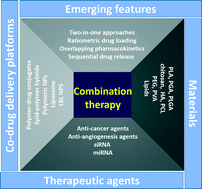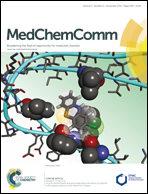Multi-drug delivery nanocarriers for combination therapy
Abstract
Recent progress in cellular biology has led to a paradigm shift in cancer therapies, from “one-drug-one-target” to “combination of drugs-multi-target” approaches to overcome several therapeutic challenges clinicians are facing today. While numerous drug combinations have successfully been identified through in vitro screening, their clinical success is still far from reality, due to dissimilarities in pharmacokinetics and tissue distribution of each drug in the combination, as well as more serious side effects because of differences in toxicity profiles. In recent years, nanoparticles have emerged as a promising class of carriers in co-delivery of multiple drugs for combination therapy. This review will focus on some of the advances and emerging features in multi-drug delivery platforms crucial to their success in in vivo models. In addition, this review will also discuss RNAi-based co-delivery platforms and their success in drug-resistant in vivo models. Packaging multiple drugs/agents in a single carrier (the “two-in-one” approach) and delivering them to tumor has the advantages of beneficially overlapping pharmacological profiles of drugs, reduced toxicity, and ratiometric drug delivery. This review will highlight the two-in-one approaches used in different co-delivery platforms and their chances of successful clinical translation. The emerging strategies discussed in this review are promising and may yield vast improvements in pharmacological control and offer the ability to personalize treatments to achieve maximum therapeutic synergy for each individual patient.


 Please wait while we load your content...
Please wait while we load your content...